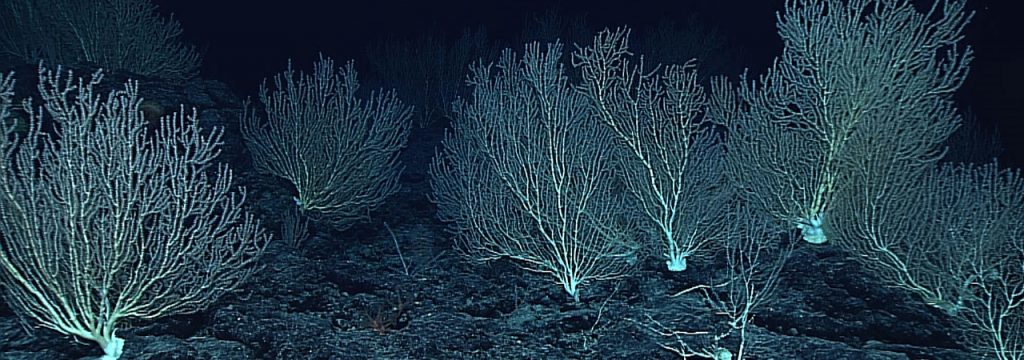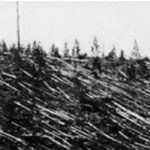
In addition to the great mid-oceanic ridges and chains of volcanoes, there are other undersea mountains scattered across the ocean bed. These include the steep, cone-shaped seamounts and the flat-topped guyots. Guyots look rather like the mesas seen in the American Southwest, rising from the ocean floor rather than from the dessert.
Davidson Seamount, the first seamount to be detected, was discovered in the 1920s off the coast of California and, soon after, others were found in the Atlantic. However, marine geologists did not even suspect the existence of guyots for more than 20 years after that. They were discovered by Princeton University geologist Henry H. Hess in 1945. He was at the time serving as a naval officer in the Pacific aboard a survey ship equipped with a fathometer. Henry named these truncated mountains for the mid-nineteenth-century Swiss-born geologist, who had served on the faculty of Princeton for ten years (1854-1864). Since then, several hundred guyots have been charted in every ocean except the Arctic. The greatest number of guyots – and the greatest number of seamounts – are found in the mid-Pacific, southwest of Hawaii.
By definition, guyots must be at least 1,000 meters above the surrounding deep-sea floor and their tops must be at least 100 meters beneath the ocean's surface. Most lie 1,000 to 2,000 meters below the surface, but some, such as Allison Guyot and Redoubt Guyot in the Pacific, are as deep as 3,000 meters. They average about 10 kilometers in circumference, but Great Meteor Tablemount in the northeastern Atlantic is about 120 kilometers in circumference. [A] Guyots harbor their own ecosystems. [B] Hatchet fish, sea fans, eels, sponges, lantern fish, and sea biscuits all dwell in this intermediate zone high above the ocean floor but far beneath the waves. [C] Some species of these organisms are found only on top of guyots. [D]
Like offshore canyons, guyots present a challenge to oceanographic theory. It is theorized that they are the relics of volcanic islands created from lava flows from oceanic ridges. Their flat tops indicate that they once stood above the surface of the ocean, where the action of waves and weather planed off their peaks. Seamounts, on the other hand, have retained their conical shape because they were never islands; their peaks never extended above the surface of the sea. Drilling samples taken by geologists taken from deep within the cores of guyots indicate the presence of basalt, confirming their volcanic origin. And dredging from the tops of guyots has recovered the rubble of wave-eroded coral reefs that date from the late Cretaceous Age, about 95 million years ago. These fossil coral are associated only with shallow water, proving that the guyots were at one time islands surrounded by ancient coral reefs. The volcanic islands disappeared before the reefs, leaving ring-like coral atolls surrounding central lagoons. The atolls eventually collapsed onto the guyots.
The submersion of the guyots probably involved two processes. As the tectonic plates beneath the ocean floor moved away from the oceanic ridges, a process called sea-floor spreading, they carried the guyots with them into deeper water. Computer analysis indicates they moved at the rate of about 10 centimeters a year. The movement of the guyots was hurried by their enormous weight. Then, as the sea rose a number of times, especially at the end of the last Ice Age, some 8,000 to 10,000 years ago, guyots were submerged even deeper.
The existence of guyots was considered a proof of the existence of continental drift, because the shifting of tectonic plates that moved these formations is the same force that caused the original landmass to split apart and the individual continents to move apart.
Mesa: A flat-topped, table-shaped mountain found in the desert regions of the southwestern United States (mesa is the Spanish word for table)
Atoll: A circular coral reef surrounding a body of water (called a lagoon)
Lagoon: A body of salt water separated from the deeper ocean by a coral reef or a similar feature.





